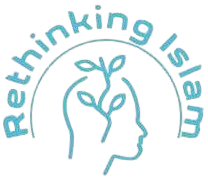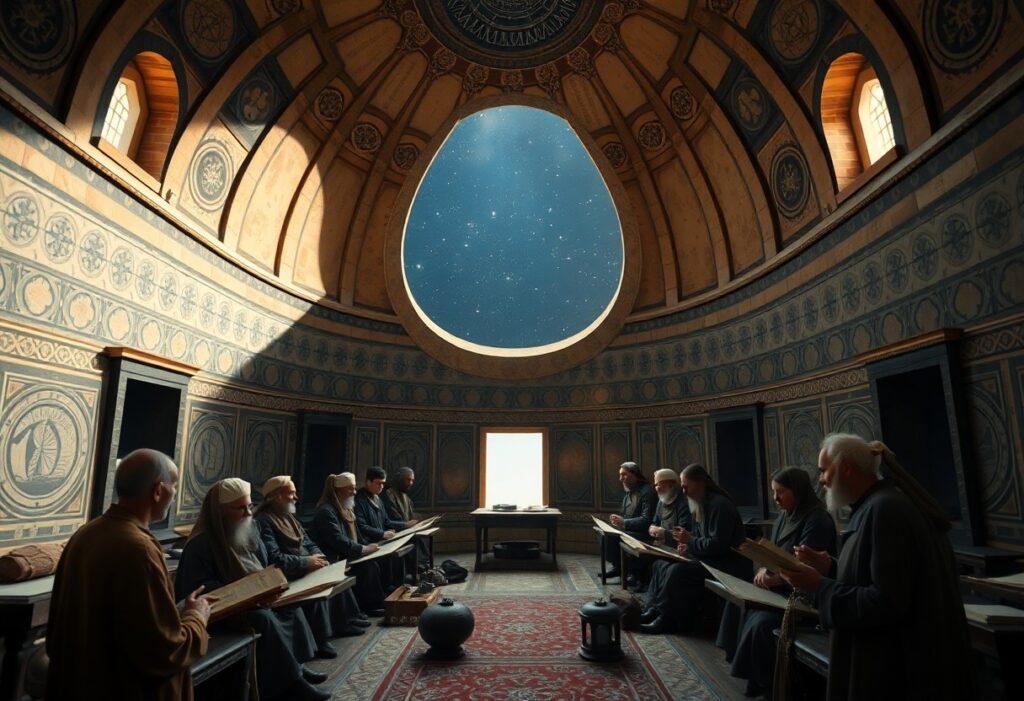Muslims were the trailblazers of the scientific world, leaving you with a treasure trove of discoveries that shaped the future. Ever heard of algebra or optics? You can thank these brilliant minds from centuries ago! They not only mapped the stars with astonishing accuracy but also invented tools that would make any modern scientist jealous. Join us as we examine the vibrant history of Muslim scholars who dared to question and explore, proving that curiosity is the true engine of progress!
Unearthing the Golden Age of Islamic Innovation
During the Golden Age of Islam, between the 8th and 14th centuries, a remarkable surge of intellect and creativity emerged, paving the way for groundbreaking advancements in various fields. Scholars, armed with a thirst for knowledge, translated, preserved, and expanded upon ancient works, laying the foundations for modern science, mathematics, and philosophy. This period was characterized by a unique blend of cultural exchange, intellectual collaboration, and a strong commitment to inquiry, all of which ignited a fire of innovation that still influences your world today.
The Birth of Experimental Science in the Islamic World
In the Islamic world, experimental science blossomed as scholars prioritized observation and experimentation over mere philosophical conjecture. Figures like Al-Razi and Ibn al-Haytham introduced methods of empirical investigation, earning their place as heralds of the scientific method. This dynamic shift allowed for a more rigorous approach to discoveries in medicine, chemistry, and optics, forming the groundwork of modern scientific inquiry that you encounter in everyday life.
Legendary Figures: From Al-Khwarizmi to Ibn al-Haytham
From Al-Khwarizmi, the father of algebra, to Ibn al-Haytham, the pioneer of optics, these legendary figures redefined the boundaries of knowledge. Their work not only contributed significantly to mathematics and science but also helped shape the very language of modern disciplines. Al-Khwarizmi’s algorithms revolutionized computation, while Ibn al-Haytham’s seminal text, “Book of Optics,” laid the groundwork for the science of optics that continues to impact how you perceive the world.
In detail, Al-Khwarizmi, who flourished in the 9th century, introduced the term “al-jabr,” which later evolved into the term “algebra.” His meticulous approach to solving equations set the stage for mathematics to become a formalized science, influencing countless generations of mathematicians. On the other hand, Ibn al-Haytham, often referred to as the “father of optics,” developed revolutionary theories on light and vision. His pioneering experiments led to the understanding of how light behaves, paving the way for advancements in various technologies such as telescopes and cameras. Together, these icons of Islamic science provide a glimpse into an era that dedicated itself to the pursuit of knowledge, showcasing a legacy that transcends time and continues to resonate with your modern scientific landscape.
Celestial Pioneers: The Astronomers of Impact
The Muslim astronomers of the Golden Age were nothing short of celestial pioneers, crafting intricate models of the cosmos that forever altered the landscape of astronomy. Their meticulous observations and innovative tools laid the groundwork for future generations, propelling the acknowledgment of astronomy into realms unexplored. You’re submerging into a universe where visionaries like Al-Battani and Al-Farghani transformed stargazing from a mere pastime into an exact science, illustrating how astute these thinkers were in their quest for celestial knowledge.
The Revolutionizing Charts of Al-Battani
Al-Battani, known as the “breakthrough astronomer,” fundamentally changed the field with his landmark work, *Kitab al-Zij*. His observations of the stars and planets yielded remarkably precise measurements, including a new value for the solar year at 365 days, 6 hours, and 20 minutes. That’s right; his passion for accuracy made him a key player in refining the mathematics of astronomy, shifting paradigms and paving the path for modern celestial navigation.
Copernicus and the Unacknowledged Muslim Influencers
Copernicus’s revolutionary heliocentric model owes a hefty debt to earlier Muslim astronomers whose works were often tucked away in dusty libraries, largely forgotten by the mainstream narrative. His mathematical foundations can be traced back to inspirations derived from texts by Al-Battani and Al-Farghani, signaling a rich exchange of knowledge that transcended cultural boundaries. The profound influence of these Islamic scholars on the Copernican Revolution has been overshadowed, despite their pivotal role in shaping astronomical thought.
While many celebrate Copernicus as the father of modern astronomy, it’s vital to recognize that his ideas were significantly shaped by Muslim scholars who meticulously documented the movements and behaviors of celestial bodies centuries prior. The observations cataloged by figures like Al-Battani provided the critical insights necessary for Copernicus to formulate his theories of a sun-centered universe. This intertwining of knowledge not only highlights how interconnected the story of science truly is but also serves as a reminder of the contributions that have been historically overlooked, just waiting for your eager mind to uncover.
Mathematics: The Backbone of Modern Science
You can’t have a conversation about science without crowning mathematics as its ultimate backbone. The contributions of Muslim scholars during the Golden Age transformed mathematics from a mere tool to a complex language that unlocks the mysteries of the universe. They enhanced our understanding of numbers, geometry, and even the vast expanse of algebra, laying the groundwork for everything from engineering to physics, all while sporting stylish turbans and earning street cred as true brainiacs.
The Legacy of Arabic Numerals and Algebra
The legacy of Arabic numerals and algebra is nothing short of revolutionary. Before Muslims popularized these symbols, Europe primarily utilized cumbersome Roman numerals. Thanks to mathematicians like Al-Khwarizmi, you can now easily perform calculations and solve equations without losing your mind in a sea of letters. His pivotal work, ‘Al-Kitab al-Mukhtasar fi Hisab al-Jabr wal-Muqabala’ laid the foundations for algebra as we know it, ushering in a new era of mathematical efficiency.
Geometry’s Evolution Under Islamic Scholars
Geometry underwent a transformation under the watchful gaze of Islamic scholars, who took the ancient principles of the Greeks and jazzed them up. Incorporating Islamic artistic elements and architectural demands, they examined into advanced concepts like conic sections and trigonometry. By applying geometry to the construction of mosques, gardens, and even astrolabes, these scholars didn’t just crunch numbers—they reshaped the world around you in stunning, tangible ways.
Building on their predecessors, Islamic scholars like Al-Biruni and Omar Khayyam explored geometry with unmatched creativity. They advanced concepts such as the Pythagorean theorem, examined into spherical geometry, and developed intricate methods for measuring the earth. By integrating geometry with philosophy and astronomy, they crafted elaborate architectural designs that stand the test of time, inspiring future generations. It’s no exaggeration to say that their blend of art and science has allowed for the stunning skylines and majestic structures you admire today.
Medicine and the Mind: The Unseen Contributions
Muslim scholars have profoundly impacted both medicine and the understanding of the human mind, shedding light on issues that were often brushed aside during their time. Your knowledge of medicine today likely owes a debt to these ancient contributors who meticulously documented every aspect of health and treatment. Their pursuits went beyond physical ailments, diving deep into mental health, psychology, and even the philosophy of healing. You can thank these pioneers for laying the groundwork that continues to influence modern practices.
The Groundbreaking Works of Avicenna
Often referred to as the “father of modern medicine,” Avicenna authored the influential text, “The Canon of Medicine,” which synthesized centuries of medical knowledge and established systematic theories on anatomy, disease, and pharmacology. His work melded empirical observation with philosophical inquiry, allowing you to appreciate the multifaceted nature of health long before Western medicine caught on. Avicenna’s contributions were so profound that they remained foundational in medical education up until the 17th century in Europe!
The Healing Heritage: Medical Practices Prior to the West
Muslim physicians were practicing a sophisticated level of medicine that included alchemical treatments, surgical techniques, and pharmacology long before the Enlightenment. Treatments ranged from herbal remedies to the use of surgical tools, making significant strides in understanding human biology and diseases. They used a comprehensive approach that accounted for not just the physical symptoms but also examined emotional and spiritual health, reflecting a holistic view of wellness you’ve likely encountered in today’s practices.
This healing heritage included practices like the use of anesthesia, which was documented in the medical texts of the period, as well as surgical techniques that preceded modern methods by centuries. Your understanding of holistic health is a direct reflection of principles set forth by these early practitioners who recognized that a person’s complete well-being was intertwined with both mind and body. They also established hospitals and medical schools, paving the way for what would eventually evolve into the modern healthcare system, making their contributions not just significant but truly revolutionary.
The Influence of Islamic Scholars on Western Thought
As you research into the intricate tapestry of Western thought, you’ll notice the vibrant threads spun by Islamic scholars. Figures such as Al-Farabi, Avicenna, and Averroes not only preserved ancient wisdom but also enriched it with their groundbreaking ideas in philosophy, science, and medicine. Their work laid the intellectual foundation that would eventually shape Europe’s renaissance, demonstrating how knowledge transcends borders and cultures!
The Translations that Changed Europe: A Literary Bridge
The translation movement in the medieval period acted like a literary bridge connecting the East and West. Muslim scholars diligently translated Greek, Persian, and Indian texts into Arabic, making them accessible to a wider audience. This wealth of knowledge was then translated into Latin, igniting a spark of enlightenment that would fuel Europe’s intellectual revival in the 12th century. Without these translations, your modern understanding of philosophy, science, and medicine would be profoundly impoverished!
The Intertwining Roads of Knowledge: Muslim and Renaissance Thinkers
The Renaissance was not merely a European phenomenon; it was an *intertwining* of ideas between Muslim and Renaissance thinkers. Scholars like Copernicus and Galileo drew heavily from the works of Islamic astronomers, utilizing their astronomical tables and sophisticated mathematical tools. This cross-cultural exchange fueled breakthroughs that ushered in modern science, showcasing that your quest for knowledge operates through a dynamic global network rather than isolated development.
During the Renaissance, Europeans began to discover the vast reservoir of knowledge preserved and augmented by Islamic thinkers over centuries. The works of Al-Khwarizmi and Ibn al-Haytham became vital texts in universities, informing subjects like mathematics and optics. You can trace the curiosity that fueled men like Leonardo da Vinci back to these earlier scholars as they fused ancient wisdom with their innovative insight. The dialogues were rich and electrifying, illustrating how two distinct cultures can enrich one another through the shared pursuit of truth and understanding.
To wrap up
Upon reflecting, you might just find yourself inspired by the rich tapestry of contributions that Muslims made to science and astronomy—those OGs of the cosmos! Next time you gaze at the stars or marvel at scientific breakthroughs, give a nod to those trailblazers who laid the groundwork while you stare in awe. So, maybe it’s time to adjust your thinking cap and tip your hat to these extraordinary minds who were light-years ahead of their time. Who knew that history’s cosmic tour guides were shaking things up long before the moon landing?

